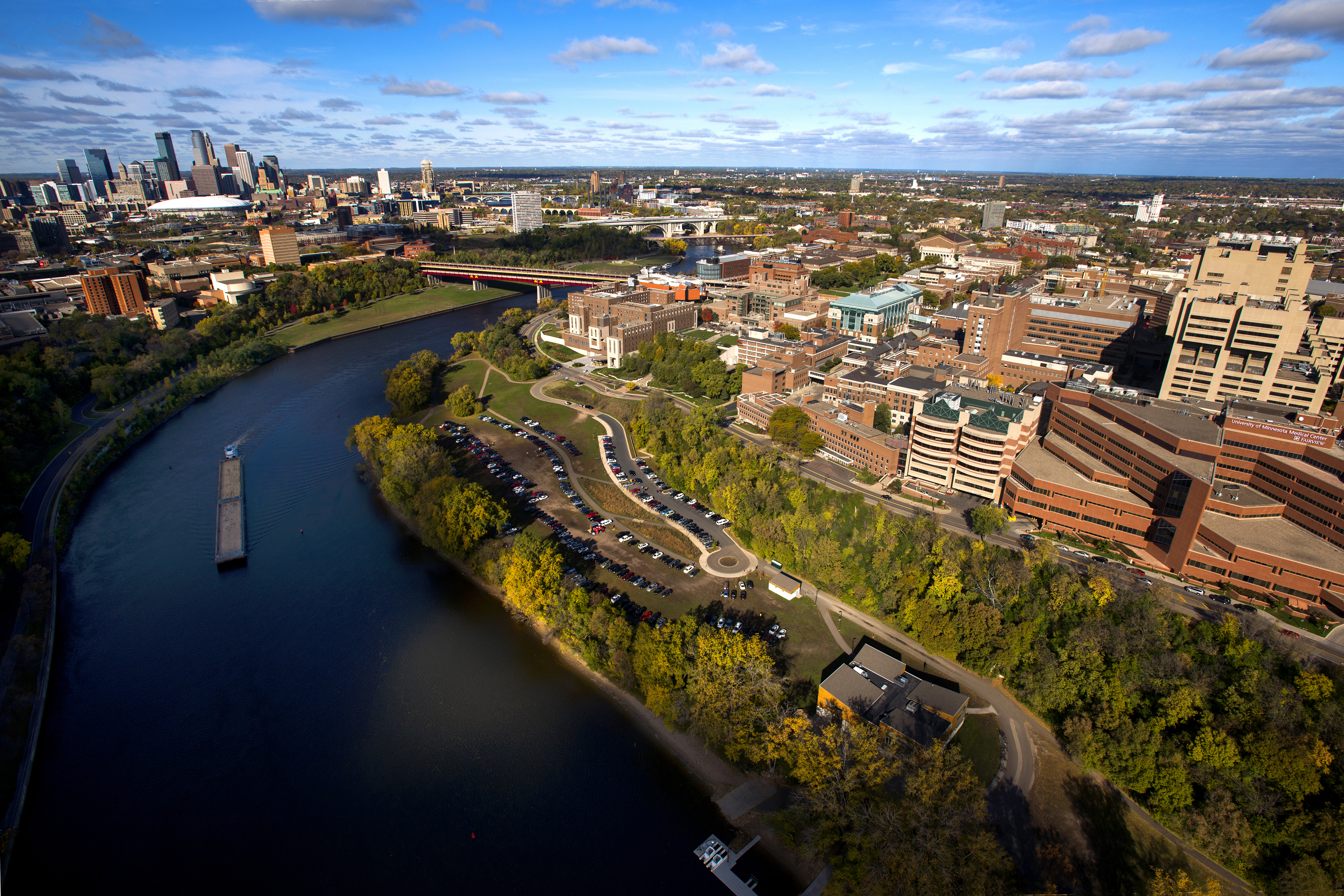Landscape architecture students in LA 8205: Urban Form Options had an unusual assignment this spring: design a master plan for the University of Minnesota Twin Cities campuses. In this interview, Danielle Jurichko tells us more about the project and her group’s focus on incorporating principles of nonviolence into their design.

Which principles of nonviolence did you decide to apply to the University campus and how did you apply them?
Our group decided to adhere to Martin Luther King Jr.’s Six Principles of Nonviolence. For example, “Nonviolence is a way of life for courageous people; Nonviolence seeks to win friendship and understanding; Nonviolence seeks to defeat injustice, not people.” These statements held power over our master planning decisions and conversations. We represented these principles in our designs by respecting the environment through creating beneficial, sustainable ecological systems. In addition, the nonviolence principles acknowledge how systematic violence impacts our campus and starts a conversation about how we can work together to help break these systems. Overall, nonviolence chooses love instead of hate.
Why did you decide to focus on applying principles of nonviolence to the University campus?
The decision to focus on applying principles of nonviolence to the University Campus Master Plan was almost immediate. Our first day of research included a walk together around campus to point out spaces where we felt uncomfortable or maybe even unsafe, and we noticed the American flag outside of Coffman Memorial Union had been lowered. It was the day of the Parkland school shooting in Florida. The horrific event prompted us to think about the future of the University of Minnesota and the safety of our classmates, professors, staff, and those who utilize the campus and how we could create an inclusive, welcoming campus that promotes the well-being of both people and the natural environment.
What was the biggest challenge you ran into while created your master plan?
A big challenge that our group struggled with was the connection of nonviolence to landscape architecture. How can we design physical spaces that can promote inclusivity and healing as well as deter crimes and violence? What spatial or conceptual components create a non-threatening environment to both patrons and plants? We were overjoyed to hear the feedback from our fellow classmates and reviewers; these encouraging responses justified the importance of focusing on such an emotional and intense topic. Although our professors provided constructive criticism of the realistic functionality of our master plan, they supported our ideas and acknowledged our emotions.
In an ideal world, what outcomes would you like to see from this project?
Although an actual master plan takes years to develop, our group is proud of how much we learned this past semester while investigating the theme of nonviolent principles on a university campus. Our main goal was to start a conversation about violence and oppression, including within and outside of campus environments, and to make it known that we do not have all the answers. Additionally, our group was determined to keep learning, researching, and becoming more aware of other people’s experiences with a realistic but optimistic mindset.
Administered by the Green Business Certification Inc. (GBCI), the Sustainable Sites Initiative (SITES) Certification provides developers with a comprehensive rating system to help them design and build more sustainable projects.
The Department of Landscape Architecture’s research assistants (RAs) in practice program not only eases the financial burden for graduate students but acts as an important resource to move green infrastructure projects forward and better connect the Twin Cities to their natural surroundings.
Below the Twin Cities’ metro area lie forgotten streams, lakes, and wetlands that once flowed freely. Buried beneath the expanding cities, these waterways still serve as crucial water conduits and are of immense importance to the metro area’s watershed, which is why the Center for Sustainable Building Research (CSBR) is determined to find them.





